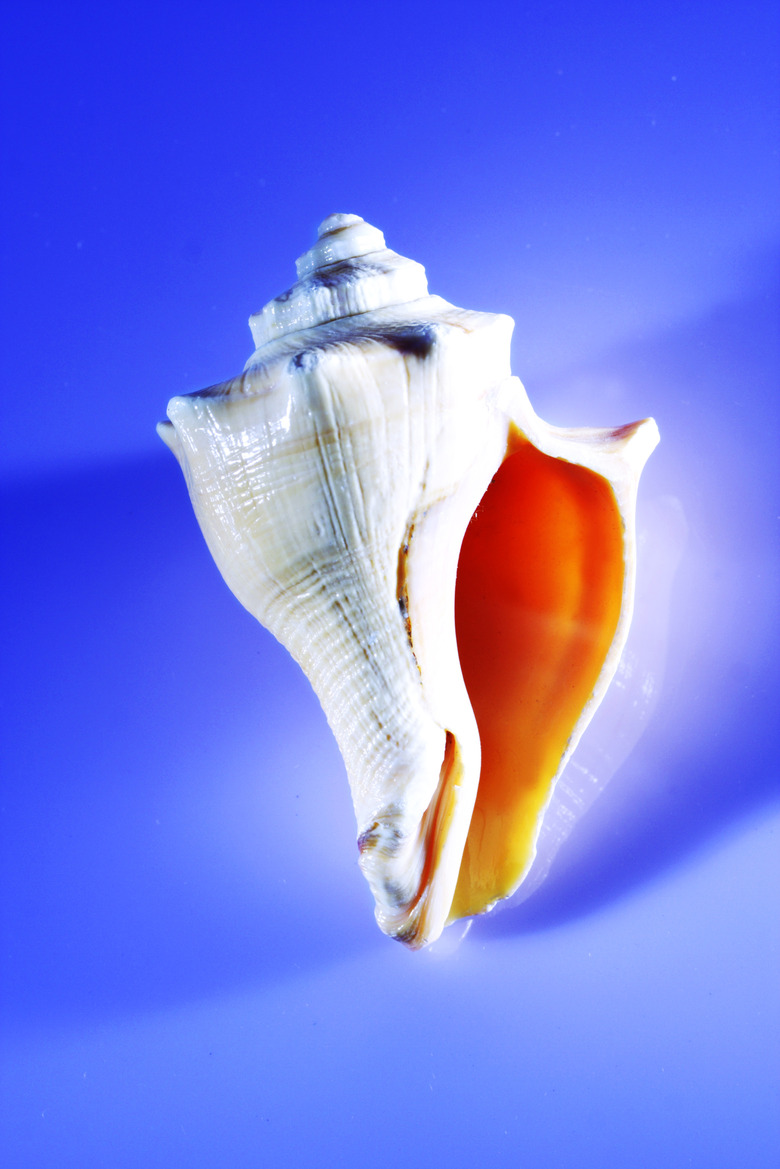What Were Seashells Used For In Ancient Times?
Seashells – the outer skeletons of marine mollusks – have fascinated humans since ancient times. Ancient societies used them as tools, currency, ornaments and spiritual objects. Beginning in the 17th century, European colonial trade and exploration in the Far East and Australasia brought back exotic seashells for wealthy collectors in Europe who prized them as precious items. This inspired conchylomania, or "madness for collecting shells," which derives from the Latin word "concha" for "mussel."
Cowry Shells as Money
Cowry Shells as Money
The cowry (sometimes written as "cowrie") shell has been used as money since the 13th century B.C. throughout Asia, the Middle East and Africa. It is an ovoid and brightly marked shell of marine gastropods belonging to the Cypraeidae family that are native to the Indian and Pacific Oceans. Around 200 living species of Cypraeidae have the same basic shape and size. This meant that the shells did not need to be counted on payment but simply weighed. Ancient Egyptians used sacks of cowry shells as symbols of wealth, and West African tribes used them for dowries. Durable and easy to handle, cowries remained in use as a currency in West Africa until the 20th century.
Jewelry and Ornaments
Jewelry and Ornaments
Jewelry was one of the earliest items made from seashells. At least 100,000 years ago, the inhabitants of what are now North Africa and Israel made beads from shells. Native peoples living in the region of today's southwestern United States and northwestern Mexico used mollusk shells from the Gulf of California for jewelry and other decorations. Inhabitants during the Early Agricultural Period, between 1200 B.C. and A.D. 150 cut beads from shells such as abalone that have an iridescent inner layer. Whole shells were used as pendants. Clamshells were crafted into bracelets during the Early Ceramic Period, from A.D. 150 to 650. Hohokam peoples carved shapes of birds, dogs, snakes and lizards from clam shells. They even etched these shapes onto shell surfaces.
Religious and Spiritual Objects
Religious and Spiritual Objects
The conch shell has been important as a religious object since ancient times. Hindus have used left-turning conch shells as articles of prayer and holders of holy water. They used conches as trumpets to eliminate negative energy during religious rituals, while warriors blew conches to announce battle. A right-turning, white conch is sacred to Buddhists as one of the eight auspicious symbols. It represents the sound of the Dharma, the teachings of the Buddha. In Christianity, scallop shells have been associated with St. James and his shrine at the pilgrimage center at Santiago de Compostella in Spain. In pre-colonial Nigeria, the shape of a cowry represented the eye of the gods, the womb of the goddess and the vessel of life and regeneration. Women in Roman Pompeii and later pre-colonial West Africa wore necklaces of cowries in the hope of preventing sterility.
Tools and Domestic Implements
Tools and Domestic Implements
Ancient inhabitants of Australasia used shells, rather than bones or stones, as tools as much as 32,000 years ago. Shells found in prehistoric Glenwood Culture sites in western Iowa were used as a variety of domestic implements. Local inhabitants worked black sandshells as scrapers to dislodge parboiled corn from the cob. Shells were worked into hoes and hafted onto a handle. Some shells may have been used to apply pigments to clothing.
References
- Smithsonian Institution: Mad About Seashells
- National Bank of Belgium Museum: Cowry Shells, a Trade Currency
- Old Pueblo Archaeology: The Ancient Use of Seashells in Arizona and Beyond
- International Journal of Humanities and Social Science: Importance of Cowrie Shells in Pre-Colonial Yoruba Land South Western Nigeria: Orile-Keesi as a Case Study
- C.P.R. Environmental Education Center India: Conch
- University of Texas: Scallop Shell Symbolism
- World Archaeology: Shell Tools Rewrite Australasian Prehistory
Cite This Article
MLA
Kielmas, Maria. "What Were Seashells Used For In Ancient Times?" sciencing.com, https://www.sciencing.com/were-seashells-used-ancient-times-7797/. 24 April 2017.
APA
Kielmas, Maria. (2017, April 24). What Were Seashells Used For In Ancient Times?. sciencing.com. Retrieved from https://www.sciencing.com/were-seashells-used-ancient-times-7797/
Chicago
Kielmas, Maria. What Were Seashells Used For In Ancient Times? last modified March 24, 2022. https://www.sciencing.com/were-seashells-used-ancient-times-7797/
